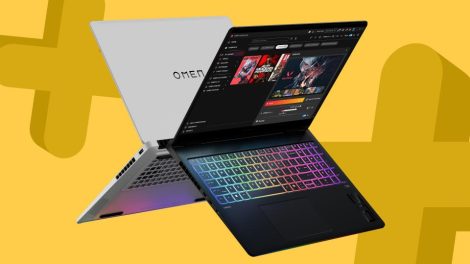
Qualcomm’s Snapdragon X Elite: A New Heart for Windows Devices
At the core of this revolution lies Qualcomm’s Snapdragon X Elite processors. Both the Surface Pro 11 and Laptop 7 feature these ARM-based chips, marking a significant departure from the traditional x86 processors from Intel or AMD. This shift brings several potential advantages:
- Enhanced Performance: Early reviews suggest these new processors deliver impressive speed and responsiveness, even when handling demanding tasks.
- Improved Energy Efficiency: ARM architecture is known for its power efficiency, potentially leading to cooler-running devices and longer battery life.
- Mobile-Inspired Features: The Snapdragon chips might enable better integration of mobile-like features such as always-on connectivity and instant wake capabilities.
This move to ARM-based processors aligns Microsoft’s hardware strategy more closely with the mobile computing world, potentially bridging the gap between smartphones and traditional laptops.
Battery Life: Rivaling the Best in the Industry
One of the most exciting claims in the Ars Technica review is the exceptional battery life of these new Surface devices. The article suggests that the battery performance rivals that of Apple’s M-series equipped laptops, such as the MacBook Air. This could be a game-changer for Windows users who have long envied the all-day battery life of Apple’s latest notebooks.
If these claims hold true across various usage scenarios, it could significantly enhance the mobility and productivity potential of Windows laptops, freeing users from the constant search for power outlets.
Bridging the Past and Future: Microsoft’s “Prism” Emulator
One of the biggest challenges in transitioning to a new processor architecture is ensuring compatibility with existing software. Microsoft appears to have addressed this concern with its “Prism” emulator. This technology promises to seamlessly translate applications designed for older x86 processors, ensuring they run smoothly on the new ARM-based devices.
Key points about the Prism emulator:
- It aims to provide a transparent experience, allowing users to run legacy apps without noticeable performance degradation.
- This approach is similar to Apple’s Rosetta 2 technology, which eased the transition to M-series chips.
- The success of Prism could be crucial in encouraging widespread adoption of ARM-based Windows devices.
While the early reports are promising, it’s worth noting that emulation is a complex task, and some software may still face compatibility issues or performance penalties.
An “Apple Silicon Moment” for Windows?
The article’s title suggests that this could be a pivotal moment for Windows laptops, comparable to Apple’s transition to its custom silicon. This comparison raises several interesting points:
- Performance Leap: Apple’s M-series chips brought significant performance improvements, especially in terms of power efficiency. If the Snapdragon X Elite can deliver similar gains, it could rejuvenate the Windows laptop market.
- Ecosystem Control: While Microsoft doesn’t design the chips like Apple does, closer integration between hardware and software could lead to optimized performance.
- Developer Adoption: Apple’s transition benefited from swift developer support. The success of ARM-based Windows devices will depend on similar enthusiasm from the Windows developer community.
If Microsoft and Qualcomm can replicate even a fraction of Apple’s success with the M-series transition, it could lead to a new generation of powerful, efficient Windows devices.
Considerations and Potential Challenges
While the initial outlook seems promising, there are several factors to consider:
- Configuration Variability: The review likely focuses on high-end models. Performance and battery life may vary significantly in lower-tier configurations.
- Emulation Limitations: Despite the promising Prism emulator, some software may still face compatibility issues or performance penalties when running on ARM architecture.
- Long-term Ecosystem Development: The success of this platform will depend on continued software optimization and developer adoption of ARM-native applications for Windows.
- Market Adoption: Consumer and enterprise willingness to embrace this new architecture will be crucial for its long-term viability.
These factors underscore the importance of real-world testing and user experiences as these devices make their way into the market.
Implications for the Future of Windows Computing
If the Surface Pro 11 and Laptop 7 live up to their promise, they could herald a new era for Windows devices:
- Blurred Lines Between Mobile and Desktop: ARM-based Windows devices could offer a more seamless experience between smartphones and traditional computers.
- Renewed Competition: Improved performance and battery life could make Windows devices more competitive against Apple’s offerings in the premium laptop market.
- Innovation Catalyst: Success in this arena could spur further innovation in chip design and software optimization for ARM-based Windows systems.
- Shift in Development Practices: Developers may increasingly prioritize ARM-native applications, potentially leading to better-optimized software across the Windows ecosystem.
Conclusion: A Promising but Unproven Future
The Surface Pro 11 and Laptop 7, powered by Qualcomm’s Snapdragon X Elite processors, represent a bold step forward for Microsoft and the Windows ecosystem. With promises of enhanced performance, exceptional battery life, and seamless compatibility with legacy applications, these devices have the potential to redefine what users expect from Windows laptops.
However, it’s important to approach this development with measured optimism. The true test will come as these devices reach the hands of consumers and professionals, facing real-world usage scenarios and diverse software environments.
For potential buyers, while the promise is exciting, it may be wise to wait for more comprehensive reviews and user experiences before fully committing to this new platform. The Surface Pro 11 and Laptop 7 could indeed mark the beginning of an “Apple Silicon moment” for Windows, but only time will tell if this transition can match the success and impact of Apple’s move to custom silicon.










Add Comment